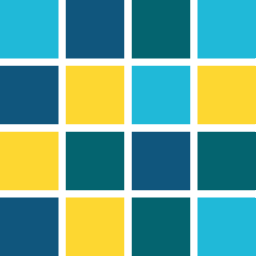Complex graphics objects
The Object icon bar "Graphical objects" contains the tools for creating graphic objects.

This section describes the complex graphic objects.
| Icon | Function |
|
|
Button with a label or an image for example, OPEN. See chapter Button. |
|
|
Cascade (multi-level menu hierarchy). See chapter Cascade |
|
|
Textfield. Box for input and output of texts or numbers. See chapter Text field. |
|
|
TextEdit is an advanced WYSIWYG viewer and editor supporting rich text formatting with HTML-style tags. It is optimized for handling large documents and to responding quickly to user input. TextEdit supports plain text and rich text and can be used as viewer (Read-Only). See chapter TextEdit. |
|
|
Radiobox. List with radio-buttons. Only one option can be selected from several , for example, selecting adjustment level. See chapter Radiobox. |
|
|
Checkbox: List with check buttons. Multiple selections are possible, for example, switching on three pumps. See chapter Check box. |
|
|
Trend. Display of series of values as trend curves. See chapter Trend |
|
|
Bar trend. Display of a series of values as bar trend diagram. See chapter Bar trend |
|
|
Table: This is an output format for numbers and texts in a list form, for example, for system warnings or status messages. See chapter Table. |
|
|
Selection list: A list containing a few pre-defined values. Only one selection can be made. See chapter Combobox. |
|
|
Spin button: Spin buttons are list boxes containing two arrows at the right side. The window only displays one list option at a time. See chapter Spin button. |
|
|
Combobox: Combo boxes are list windows containing an arrow at the right side and displaying only one selected option from a list. See chapter Combobox. |
|
|
Clock. See Clock. |
|
|
Tab: Tabs are used to display detailed information well sorted. Instead of individual panels, the panels are managed and displayed by index tabs. These allow several panels to be displayed as a stack. See chapter Tab. |
|
|
Slider: The slider provides either a vertical or an horizontal slider. Slider is used for controlling a bounded value. See chapter Slider |
|
|
A thumb wheel: A thumb wheel is a device that can be moved between its start and end values. It is an alternative presentation of a slider. See chapter Thumb wheel. |
|
|
The Progress Bar widget is a horizontal progress bar. It is used to provide the user an indication of the progress of an operation. See chapter Progress bar. |
|
|
The LCD number displays a number with LCD-style digits. Decimal, hexadecimal, octal or binary numbers can be displayed. Numbers in almost any size can be displayed. See chapter LCD Number. |
|
|
A monthly based Calendar widget allowing to select a date. See chapter Calendar. |
|
|
Datapoint tree. Shows the datapoint types and datapoints in a tree view. See chapter DpTreeView. |
|
|
A datapoint type from a DPTreeView can be added (dragged) to the DPTypeView. See chapter DpTypeView. |
|
|
Embedded module: An embedded module is a module embedded into a panel to display further panels in this module. See chapter Embedded module. |
|
|
Tree widget: A tree widget is a tree view that can display and control items and allows adding new items at any time. See chapter Tree widget |
|
|
Zoom navigator: Allows you to zoom modules. See chapter Zoom Navigator. |
|
|
Inserts panel reference. See chapter Panel reference. |
|
|
An EWO (External Widget Object) is a graphical object (a Widget) created by some external party (customer) and can be embedded into any WinCC OA Panel. It is platform independent. See chapter EWO (External Widget Object). |
